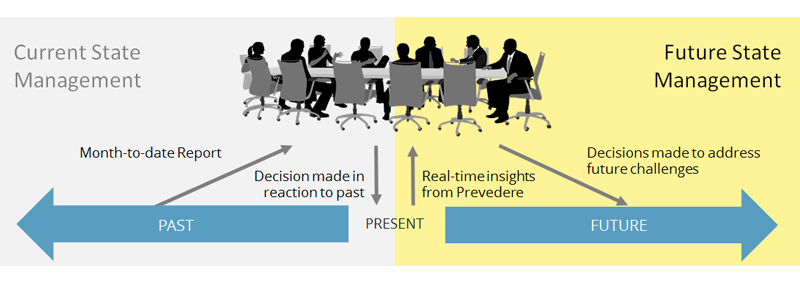Last Updated: June 22, 2018
Considering how much data we as marketers have, it still surprises me how much campaign money is spent blindly, without question, or because “that’s what we did last year.”
Having spent many years in some kind of marketing function – from startups to software companies to multinational corporations – I’ve seen the shift in tactical activities, like ad planning, evolve from a broad stroke coverage (much like the spray of a shotgun) to being very data driven, with online advertising certainly driving demand for focused audience targeting.
But at a higher, more strategic level, any marketing team is still challenged to properly allocate budget by product or region, to determine what promotions to run and when, and to track the effectiveness of everything to be accountable to executive scrutiny. As much as marketers desire to address these challenges with cold, hard data and analytics, the truth is sobering: there just isn’t enough time. The reason for this? Well, there are several:
- Perhaps your company doesn’t have the reporting systems to quickly compute the spend of all of last year’s campaigns vs. the perceived lift in sales.
- Or maybe your staff is too heads-down with everyday issues – such as creative direction, content deadlines or wrestling (sorry – “working”) with your fellow product managers – to spend time analyzing data.
- It may be that your industry requires you to lock in your media spend for all of NEXT year (especially for broadcast or outdoor media) in Q3 or Q4 of THIS year.
Ultimately, as much as you’d LOVE to have more information, best guesses eventually give way to “shotgun marketing” – broad stroke strategies relying heavily on what you did LAST year.
There is a better way.
Future State Management

Instead of trying to analyze your historical performance data to drive decisions in the present, the key is to analyze the leading indicators of your business to give you a clearer view of the future. We call this “Future State Management.” Here’s how it works:
- Prevedere collects millions of external data sets – stock ticker values, consumer sentiment, energy prices, census information, weather data and more. We clean, optimize and organize all this data and have it all available in our Global Data Cloud.
- We analyze your internal performance data (for marketing, it would be sales by product and region) against our Global Data Cloud to determine what external factors are true leading indicators of your business.
- We then combine the most predictive factors (both internal and external) into a single data model that simulates sales performance in the past as well as in the future.
If we can account for all the elements that drive your business, we can predict (as much as 18 months out) the future performance of your company. This gives you the ability to plan when and where you should load up on advertising and promotions and when to slow down.
I’ll go into this in more detail on my next post. In the meantime, follow us on Twitter for the latest in marketing, sales and financial forecasting insights.